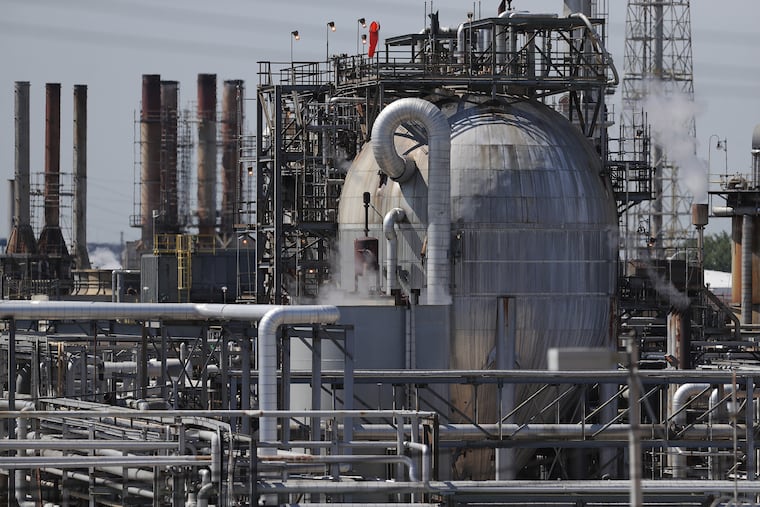Even after Philadelphia refinery closes, the environmental damage won’t disappear | Opinion
This refinery represents 1,300 acres that have been steeped with toxic waste generated by 150 years of activity.

The Philadelphia Energy Solutions (PES) refinery declared bankruptcy in 2018, but it went out with a bang last month. After a series of explosions rocked the refinery around 4 a.m. on June 21, PES quickly announced the facility would close. This has drawn the public’s attention, quite spectacularly, to the dangers that fossil fuel infrastructure can pose to our city and our need to transition to renewable and sustainable sources of energy.
Despite its closure, the toxic legacy of the PES refinery will continue to impact Philadelphia residents. As the single-largest source of air pollution and greenhouse gas emissions in Philadelphia, the PES refinery has been a long-term plague on public health and the environment. But the refinery’s threat to the environment goes beyond air pollution and climate change.
This refinery represents 1,300 acres that have been steeped with toxic waste generated by 150 years of activity. Contaminants include carcinogens, lead, and other hazardous material. Located in a densely populated area of Philadelphia, this contamination needs extensive and expensive remediation that cannot be ignored, especially since pollutants have been known to migrate offsite into the soil and groundwater.
The full cost of environmental remediation efforts should fall on the shoulders of the polluters, not taxpayers. PES isn’t some small, family-run business.
PES was operated until 2012 by Sunoco, which in turn came under ownership of Energy Transfer Partners,* a company that retains a small share in PES. Energy Transfer is behind the contentious Mariner East pipeline cutting through Chester and Delaware counties.
Energy Transfer is perhaps better known for its role in creating the more infamous Dakota Access pipeline. This corporation can and should pay for a comprehensive environmental remediation. Yet Sunoco plans only to do a small-scale remediation effort. If this plan is approved, the company will not have to shoulder any responsibility or costs associated with remaining contamination.
This may put the burden on taxpayers to pay for remediation of any contamination not covered by Sunoco. It’s not surprising that this approach goes against public interest, because the plan has been made without community involvement. Though there are wide-reaching implications for local residents, this remediation process has arguably violated state law by proceeding without properly informing or consulting with the surrounding community.
The costs of environmental remediation is not the only way that PES hurts our local economy. Adding insult to injury, the state settled with the refinery after initially claiming that PES could owe billions of dollars in unpaid taxes. A portion of this revenue could support a transition to renewable energies — which do not harm air quality or cause massive explosions.
Despite the PES refinery’s closure, there is still a possibility that it may be purchased by another corporation that plans to resume refining activities. If our city values public health over corporate profits, the future of this property should not be in the fossil fuel industry. Renewable energy creates more jobs per money invested than fossil fuels. We can’t stop the layoffs of hundreds of workers from the PES facility, but we can create more employment opportunities in the future for skilled laborers like these by growing the renewable energy market.
The PES refinery’s legacy will continue to be a risk to local communities because of the environmental contamination that it is leaving behind. When refinery operations began on this site in 1866, no one would have foreseen the public health implications of building in an area that would become more densely populated over time. It is 2019 now, and we should have a choice in whether or not we condone restarting an industry that has historically been the biggest single source of air pollution in Philadelphia.
Do we want to maintain our ranking as the fourth-worst major U.S. city for asthma? We need to hold polluters accountable for the costs of remediation and unpaid taxes, and ensure that the future of this property is in the best interest of the public health and of taxpayer’s money by investing in renewable and sustainable sources of energy. One PES was more than enough.
Breana Hashman is a geologist currently working for Clean Water Action as a program assistant.
*Editor’s note: This story has been updated to more accurately reflect the ownership stake of Energy Transfer in Sunoco and PES.